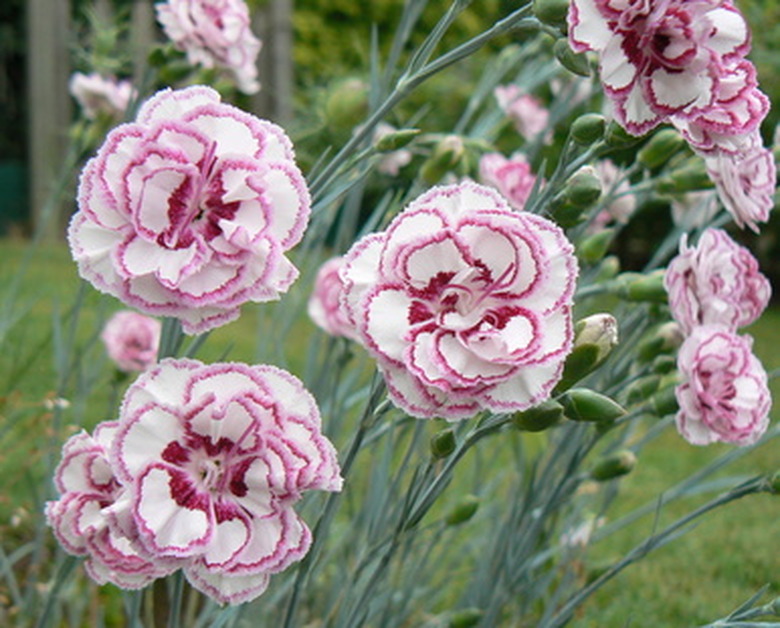How To Deadhead Dianthus Flowers
Deadheading is a gardening term for the removal of dead blooms from a plant. Depending on the type of plant and the woodiness of the stems, deadheading can be done by pinching off the flower by hand or with pruning shears. Removing dead blooms, before they have a chance to go to seed, encourages the plant to re-bloom. Dianthus, also commonly called carnation or sweet William, should be deadheaded with pruning shears. Because dianthus may re-bloom on each stem, it requires a bit of caution when deadheading.
Deadheading is a gardening term for the removal of dead blooms from a plant. Depending on the type of plant and the woodiness of the stems, deadheading can be done by pinching off the flower by hand or with pruning shears. Removing dead blooms, before they have a chance to go to seed, encourages the plant to re-bloom. Dianthus, also commonly called carnation or sweet William, should be deadheaded with pruning shears. Because dianthus may re-bloom on each stem, it requires a bit of caution when deadheading.
Step 1
Wait until midseason to deadhead dianthus. Because dianthus is such a prolific bloomer, it is easier to wait until there are many spent flowers rather than deadhead one by one.
- Deadheading is a gardening term for the removal of dead blooms from a plant.
- Depending on the type of plant and the woodiness of the stems, deadheading can be done by pinching off the flower by hand or with pruning shears.
Step 2
Check the stems of the dead dianthus blooms for buds. If buds are present, use the pruning shears to cut the stem to 1/2 inch above the bud. If there are no buds, cut the stem down to the first set of leaves below the dead flower.
Step 3
Bag and remove all spent flowers and foliage that you remove from the plant. Garden detritus left on the soil presents a breeding ground for pests.
Deadhead Dianthus Flowers
Dianthus's bright pink, red or lavender flowers with ruffled edges have been popular with gardeners for centuries. Some flowers in the Dianthus genus include maiden pinks, sweet william and carnations. Deadheading, or the removal of spent blossoms, will help ensure constant flowers in your garden throughout the growing season. You may cut a few leaves for bouquets, but make sure the plant has some leaves left for photosynthesis. Collect the dead flower stalks in a basket or bucket to carry to the compost pile. Place any cut flowers intended for a bouquet into water immediately. Continue to monitor your dianthus over the course of the summer and fall.
- Check the stems of the dead dianthus blooms for buds.
- You may cut a few leaves for bouquets, but make sure the plant has some leaves left for photosynthesis.
Things Needed
- Pruning shears
- Garbage bag
References
- National Gardening Bureau: Dianthus Fact Sheet
- ?\"?California Master Gardener Handbook?;\" ?Dennis R.? ?Pittenger?; ?2002
- Sunset: Deadheading: it keeps flowers coming all season
- University of Missouri Extension: Removing Spent Flowers/Deadheading
